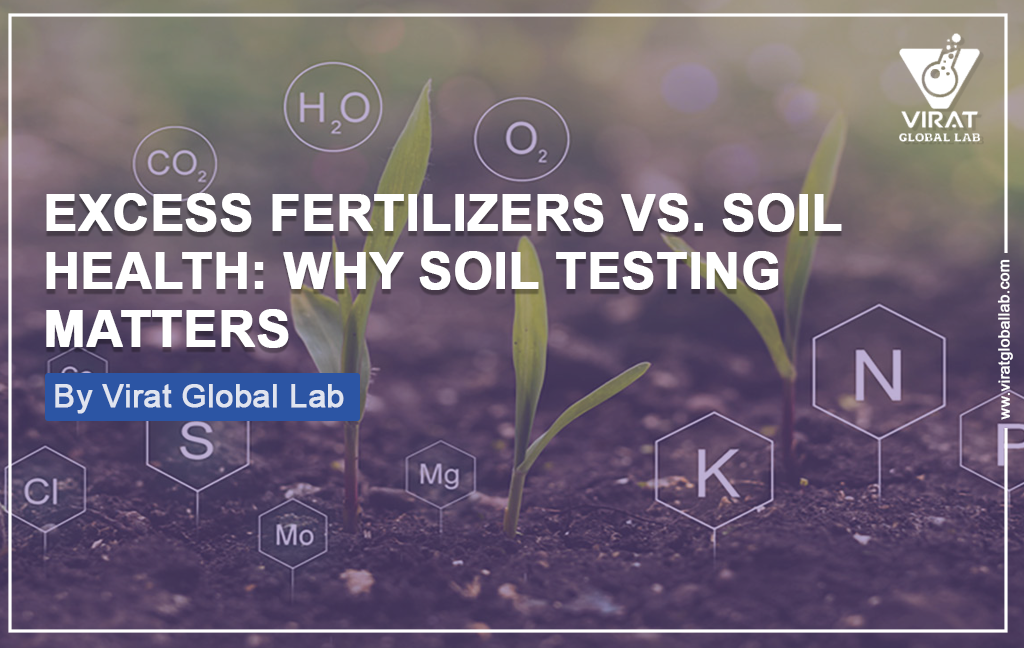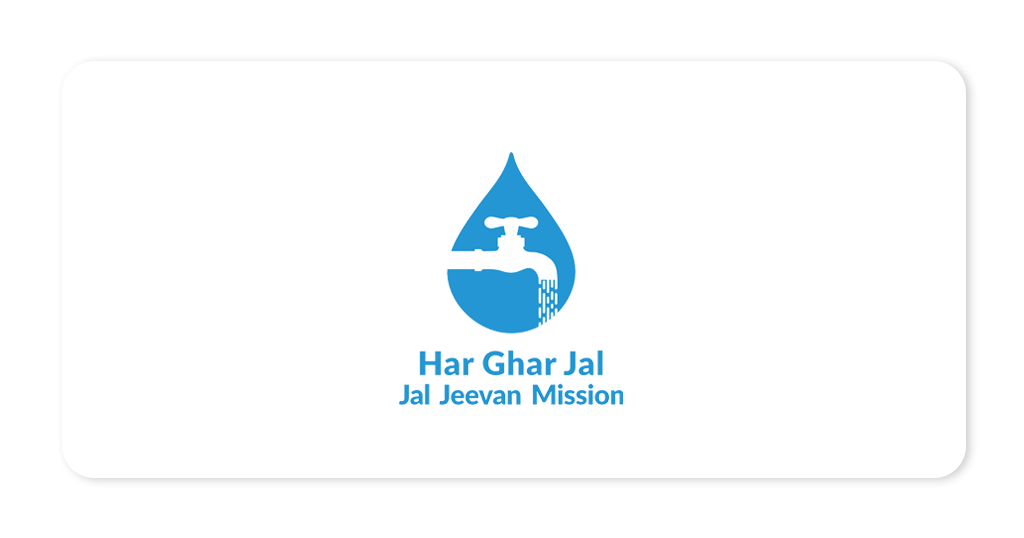19 Aug 2025
Impact of Excess Fertilizer Use on Soil Health and the Role of Soil Testing in Sustainable Agriculture

Introduction
Soil is often called the “living factory of life.” It not only provides a physical base for plants but also acts as a reservoir of water, nutrients, and beneficial microorganisms. However, in the pursuit of higher yields, farmers across the globe, particularly in countries like India, have increasingly relied on chemical fertilizers. While fertilizers are essential for crop production, their overuse and imbalance has led to long-term damage to soil health and agricultural productivity.
This article explores how excessive fertilizer use degrades soil, the scientific parameters of soil quality, the adverse effects of lost soil fertility on crops, and why soil testing is vital for sustainable agriculture.
- How Fertilizers Affect Soil Health
- Soil Acidification
- Over-application of nitrogen-based fertilizers (urea, ammonium sulphate) increases soil acidity.
- Acidic soils reduce the availability of essential nutrients like phosphorus, calcium, and magnesium.
- This leads to toxic levels of aluminium and manganese, which inhibit root growth.
- Decline in Organic Matter
- Excess fertilizers reduce the dependence on organic manures.
- Over time, soil loses humus and beneficial microbes, reducing its buffering and water-holding capacity.
- Nutrient Imbalance
- Continuous use of NPK fertilizers without micronutrients depletes zinc, boron, sulphur, and iron.
- Imbalances cause stunted growth, leaf yellowing, and lower grain quality.
- Soil Salinity and Sodicity
- Overuse of fertilizers, especially in irrigated areas, increases electrical conductivity and sodium levels.
- This makes soil hard, less porous, and unsuitable for root penetration.
- Water Pollution and Environmental Hazards
- Excess nitrates leach into groundwater → causes “blue baby syndrome” in infants.
- Run-off leads to eutrophication in rivers and lakes, killing aquatic life.
- Adverse Effects of Lost Soil Fertility on Crops
When soil fertility declines, the impact on crops is immediate and severe. Some major adverse effects include:
- Reduced Crop Yields
- When soil fertility declines, nutrient deficiencies—especially nitrogen—limit plant growth.
- Nitrogen deficiency causes poor leaf development, reducing the plant’s ability to perform photosynthesis.
- As a result, less energy is available for growth and grain filling, directly lowering crop yield.
- Poor Crop Quality
- Soil nutrient imbalance affects the nutritional quality of the produce.
- Low nitrogen reduces protein content in cereals (like wheat and rice), while phosphorus and sulphur deficiencies affect grain quality.
- Oilseed crops grown in nutrient-deficient soils show reduced oil content, and micronutrient deficiency (like zinc, iron, boron) leads to nutritionally poor produce that is less beneficial for human and animal consumption.
- Increased Susceptibility to Diseases and Pests
- Healthy soils strengthen plants against biotic stress.
- Potassium-deficient soils result in weak cell walls and poor disease resistance, making plants more vulnerable to fungal infections and insect attacks.
- Similarly, lack of micronutrients can weaken the plant’s natural immune system.
- Stunted Growth and Chlorosis (Yellowing of Leaves)
- Loss of essential nutrients like nitrogen, magnesium, and iron causes visible deficiency symptoms in plants.
- Leaves may turn pale yellow (chlorosis), plants remain shorter than normal, and growth stagnates due to reduced chlorophyll and energy production.
- Poor Water Use Efficiency
- Fertile soils with high organic matter act like a sponge, storing water for plant use.
- When fertility declines, organic matter levels fall, reducing the soil’s water-holding capacity.
- This results in crops suffering more during dry spells, leading to wilting and yield losses even with moderate irrigation.
- Delayed Flowering and Maturity
- Phosphorus and potassium are critical for energy transfer and reproductive growth in plants.
- Their deficiency delays flowering, fruiting, and maturity, extending the crop cycle.
- This not only increases water and nutrient requirements but also exposes the crop to late-season climatic risks.
- Soil Hardening and Root Restriction
- Continuous nutrient depletion reduces soil structure and microbial activity.
- Hard and compacted soil layers develop, restricting root penetration.
- Shallow and weak root systems limit nutrient and water uptake, further worsening plant health and productivity.
- Economic Loss to Farmers
- Declining soil fertility directly impacts farm profitability.
- Farmers face lower productivity (fewer grains, fruits, or vegetables per acre) while also bearing higher input costs due to repeated use of fertilizers and pesticides.
- Over time, this cycle reduces income security and threatens sustainable farming livelihoods.
Case in point:
Case Study 1: Wheat Yield Stagnation in the Indo-Gangetic Plains (India)
The Indo-Gangetic Plains are often referred to as the “food bowl of India,” producing a significant share of the country’s wheat. However, research by the Indian Council of Agricultural Research (ICAR) highlighted that wheat yields had stagnated over the last decade, despite farmers applying 15–20% more fertilizers annually.
- Problem:
Over-reliance on nitrogen (urea) and phosphorus (DAP), with minimal application of potash and micronutrients, caused a severe NPK imbalance. At the same time, reduced use of farmyard manure led to loss of soil organic matter, while deficiencies of zinc and boron became widespread.
- Impact:
Crop growth was stunted, and yields plateaued, threatening food security in the region.
- Intervention:
With the introduction of soil testing and site-specific nutrient management (SSNM), farmers were able to customize fertilizer use based on actual soil needs. This not only reduced unnecessary inputs but also restored balance.
- Results:
Yields improved by 15–20%, proving that judicious nutrient application based on soil health is more effective than indiscriminate fertilizer use.
Source: ICAR-IARI, 2017; Economic Survey of India, 2019
Case Study 2: Paddy Fields in Punjab and Haryana
Punjab and Haryana are major rice-producing states. Yet, excessive fertilizer dependency has begun to show alarming soil fertility issues. A 2020 study by Punjab Agricultural University (Ludhiana) revealed that continuous application of urea and DAP had lowered soil pH in many fields to below 5.5, a level classified as strongly acidic.
- Problem:
Acidic soils reduced the availability of phosphorus and several micronutrients. Farmers also noticed stunted paddy growth, yellowing of leaves, and higher pest incidence.
- Impact:
Lower phosphorus uptake led to poor tillering and reduced rice productivity, while pest attacks further cut profits.
- Intervention:
Corrective action involved the application of lime to neutralize acidity, combined with soil testing-based nutrient correction plans.
- Results:
Within a few seasons, rice yields improved by 12–18%, and pest pressure reduced significantly, showing the long-term value of soil management.
Source: Punjab Agricultural University, Ludhiana (2020) – Study on Acid Soils
Case Study 3: Vegetable Farming in Nashik, Maharashtra
Nashik, one of India’s largest vegetable belts, faced a crisis due to intensive fertilizer use in commercial vegetable production. A study by the National Bureau of Soil Survey & Land Use Planning (NBSS&LUP), Nagpur (2021) found that continuous nitrogen overuse had led to nitrate contamination in groundwater exceeding 45 mg/L (the WHO safe limit).
- Problem:
Overdose of nitrogen fertilizers reduced soil fertility, depleted organic matter, and polluted water sources. Farmers observed declining yields, poor soil structure, and increased cultivation costs.
- Impact:
Public health risks emerged due to nitrate pollution, while long-term sustainability of vegetable farming was under threat.
- Intervention:
A multi-pronged approach was adopted:
- Soil testing to assess nutrient status.
- Drip irrigation to reduce fertilizer leaching.
- Organic manure incorporation to restore soil carbon.
- Results:
Within two years, tomato yields increased by 25%, soil organic carbon improved, and nitrate leaching reduced significantly.
Source: NBSS&LUP, Nagpur, 2021
Conclusion
Fertilizers, when used judiciously, are a boon to agriculture. But unchecked application is silently degrading our soils, reducing productivity, and polluting our environment. Soil testing is the key to reversing this trend — helping farmers understand what their land truly needs, ensuring healthy soils, better yields, and sustainable farming for future generations.
Healthy soil = Healthy crops = Healthy nation.
At Virat Global Lab (A Division of Aseries Envirotek India Private Limited), we believe that healthy soil is the foundation of sustainable agriculture. Our advanced soil testing services are designed to give farmers, agri-businesses, and institutions accurate insights into soil health parameters such as pH, organic carbon, NPK, micronutrients, salinity, and water-holding capacity.
Customized fertilizer recommendations based on test results
Scientific guidance for restoring soil fertility
Pan-India service network for Soil testing to ensure accessibility for every farmer
Don’t let your soil silently lose its productivity.
Get your soil tested today with Virat Global Lab (A Division of Aseries Envirotek India Private Limited — because every healthy harvest begins with healthy soil.
Related Post
































